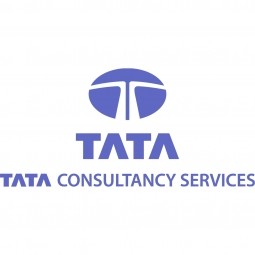
技术
- 应用基础设施与中间件 - 中间件、SDK 和库
- 平台即服务 (PaaS) - 应用开发平台
适用行业
- 设备与机械
- 公用事业
适用功能
- 维护
用例
- 行为与情绪追踪
- 时间敏感网络
服务
- 系统集成
客户
法国电力能源
关于客户
EDF Energy是一家英国综合能源公司,由法国国有企业 EDF 全资拥有,业务涵盖发电以及向英国各地的家庭和企业销售天然气和电力。
挑战
EDF 用于事件处理的 IT 系统完全是手动的,没有任何现代化空间。
EDF 希望通过提高对不断增长的能源需求的响应时间来更好地服务其商业和住宅客户。为实现这一目标,该公司需要为其员工提供正确的工具,以提高生产力、更好的协作和增强的 IT 体验,同时降低服务成本。然而,该公司高度定制化的服务管理系统具有大量手动流程和有限的自动化潜力,因此难以预测或预防系统故障并提供整体弹性服务
解决方案
EDF 对其架构进行了现代化改造,并自动化了关键任务 IT 服务。
TCS 通过实施 Rapid Now 2.0 框架支持 EDF 的转型计划,该框架在 ServiceNow 实例上预配置了 ITSM 行业最佳实践。 EDF 环境的背景知识帮助 TCS 加快了周转时间,因为它通过以下方式彻底改革了客户的关键任务 IT 服务:
- 利用 RapidNow 2.0 框架,为在重新设计的服务架构中运行而量身定制
- 支持采用托管服务平台 (MSP) ServiceNow
- 扩展敏捷方法的使用,每个版本发布都产生具有新功能的最小可行产品 (MVP)
- 与 mvIT 协作提供可配置的集中式 ITSM 平台,该平台能够集成所有 IT 监控工具并提供服务运行状况的端到端可见性
运营影响
数量效益

Case Study missing?
Start adding your own!
Register with your work email and create a new case study profile for your business.
相关案例.

Case Study
Smart Water Filtration Systems
Before working with Ayla Networks, Ozner was already using cloud connectivity to identify and solve water-filtration system malfunctions as well as to monitor filter cartridges for replacements.But, in June 2015, Ozner executives talked with Ayla about how the company might further improve its water systems with IoT technology. They liked what they heard from Ayla, but the executives needed to be sure that Ayla’s Agile IoT Platform provided the security and reliability Ozner required.

Case Study
IoT enabled Fleet Management with MindSphere
In view of growing competition, Gämmerler had a strong need to remain competitive via process optimization, reliability and gentle handling of printed products, even at highest press speeds. In addition, a digitalization initiative also included developing a key differentiation via data-driven services offers.

Case Study
IoT Solutions for Smart City | Internet of Things Case Study
There were several challenges faced: It is challenging to build an appliance that can withstand a wide range of voltage fluctuations from as low at 90v to as high as 320v. Since the device would be installed in remote locations, its resilience was of paramount importance. The device would have to deal with poor network coverage and have the ability to store and re-transmit data if networks were not available, which is often the case in rural India. The device could store up to 30 days of data.

Case Study
Predictive Maintenance for Industrial Chillers
For global leaders in the industrial chiller manufacturing, reliability of the entire production process is of the utmost importance. Chillers are refrigeration systems that produce ice water to provide cooling for a process or industrial application. One of those leaders sought a way to respond to asset performance issues, even before they occur. The intelligence to guarantee maximum reliability of cooling devices is embedded (pre-alarming). A pre-alarming phase means that the cooling device still works, but symptoms may appear, telling manufacturers that a failure is likely to occur in the near future. Chillers who are not internet connected at that moment, provide little insight in this pre-alarming phase.

Case Study
Automation of the Oguz-Gabala-Baku water pipeline, Azerbaijan
The Oguz-Gabala-Baku water pipeline project dates back to plans from the 1970’s. Baku’s growth was historically driven by the booming oil industry and required the import of drinking water from outside of the city. Before the construction of the pipeline, some 60 percent of the city’s households received water for only a few hours daily. After completion of the project, 75 percent of the two million Baku residents are now served around the clock with potable water, based on World Health Organization (WHO) standards. The 262-kilometer pipeline requires no pumping station, but uses the altitude differences between the Caucasian mountains and the capital to supply 432,000 m³/d to the Ceyranbatan water reservoir. To the people of Baku, the pipeline is “the most important project not only in 2010, but of the last 20 years.”

Case Study
GPRS Mobile Network for Smart Metering
Around the world, the electricity supply industry is turning to ‘smart’ meters to lower costs, reduce emissions and improve the management of customer supplies. Smart meters collect detailed consumption information and using this feedback consumers can better understand their energy usage which in turn enables them to modify their consumption to save money and help to cut carbon emissions. A smart meter can be defined in many ways, but generally includes an element of two-way communication between the household meter and the utility provider to efficiently collect detailed energy usage data. Some implementations include consumer feedback beyond the energy bill to include online web data, SMS text messages or an information display in consumers’ premises. Providing a cost-effective, reliable communications mechanism is one of the most challenging aspects of a smart meter implementation. In New Zealand, the utilities have embraced smart metering and designed cost effective ways for it to be implemented. The New Zealand government has encouraged such a move to smart metering by ensuring the energy legislation is consistent with the delivery of benefits to the consumer while allowing innovation in this area. On the ground, AMS is a leader in the deployment of smart metering and associated services. Several of New Zealand’s energy retailers were looking for smart metering services for their residential and small business customers which will eventually account for over 500,000 meters when the multi-year national deployment program is concluded. To respond to these requirements, AMS needed to put together a solution that included data communications between each meter and the central data collection point and the solution proposed by Vodafone satisfied that requirement.



